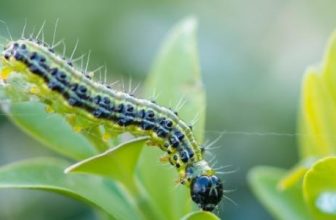Theperfectgarden.co.uk may earn a small commission (at no extra cost to the user) from Amazon and other online retailers if a purchase is made after clicking a link. I appreciate your continuing support.
Is Wisteria Poisonous to Dogs?
All parts of a wisteria plant are poisonous to dogs. However, the stems are not as toxic as the seed pods or flowers. These contain lectin and wisterin, two organic substances found naturally in foods but are highly toxic to most animals and could cause vomiting and diarrhoea at the very least.
My Dog has Eaten/Chewed Wisteria – What should I Do?
Get in touch with your veterinary surgery immediately and follow their advice. There are many things dogs eat and may have a mild reaction to. However, lectin and wisterin are two highly toxic, plant-derived chemicals that could make your dog seriously ill. Remember to take a sample of what your dog has eaten to the vet if you can.
Why Wysteria is Poisonous to Dogs?
Both Lectin and Wisterin are plant-based chemicals that are highly toxic if ingested at a high rate.
- Lectin:
- Lectin is found in many foods that we eat, including grains and foods that are members of the pea family e.g. kidney beans, peanuts and lentils. Wisteria plants are also a member of the pea family.
- There are several types of Lectin one of which is present in seed pods to protect them from fungus growth.
- Wisterin:
- Wisterin is a saponin (Latin, derived from “Soap” and “in”) which is also referred to as triterpene glycoside. A toxic organic chemical that has a foaming quality when mixed with water. It is thought that the bitter taste of saponins is naturally present in plants to prevent feeding from animals, and insects.
Is Wisteria Poisonous to Other Pets?
Wisteria is poisonous to pets, including fish, horses and cats. It is also poisonous to humans. Wisteria is a beautiful climber with lovely flowers. As the flowers start to fade, they can blow around in the wind and end up in ponds or water features. If your pet is prone to drinking water from your pond or a rain-filled bucket under or near a wisteria, they may show signs of being unwell and wisteria poisoning could be the cause.
How can I avoid my Dog eating Parts of Wisteria?
It seems a shame to remove all plants that are toxic from domestic gardens and of course, you can’t teach an animal not to eat certain plants as you can educate children! However, if your dog is prone to a plant-based garden snack, then it may be wise to remove certain plants from your garden.
There are a few steps you can take when planting toxic plants in your garden that may reduce the risk of your pet poisoning.
- Plant toxic plants on fence lines behind shrubs.
- Remove faded flowers from plants early.
- Remove seed pods.
- Net and remove flowers that may have blown into water that pets may drink from.
- Rake up seed pods and fallen flowers from patios and lawns.
- Place guards around trunks of vines to stop animals from chewing them.
- Do not leave prunings on the compost heap, place them in the bin.
- You are allowed to cut back overhanging plants which have originated from neighbouring properties.



